| Vergara family | |
|---|---|
| Aristocracy, political family | |
| Country | Spain Chile Colombia United States |
| Current region | Americas and Europe |
| Earlier spellings | Bergara |
| Etymology | Elevated Fern |
| Place of origin | Vergara, Guipúzcoa, Spain |
The Vergara family is one of the most aristocratic families of Colombia and Chile with origins in Bergara, Spain. The House of Vergara had its period of greatest influence between the 17th, 18th, and 19th centuries. The family is spread across several branches in Spain, Colombia, Chile and the US. The Vergara family is considered as one of the first families of Spaniards in the Americas that arrived first as conquistadors, then as royal officers of the Spanish crown. The Vergara Family have produced four presidents of Colombia by the same surname; and three more related by blood. Another branch is considered amongst the founding families of Chile. Originally from Gipuzkoa, Spain, more specifically from Bergara, a municipality in Basque Country.
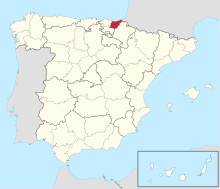
Origin
Surname Vergara
Vergara is a toponymic named after the Spanish version of the Basque region of Bergara found in Gipuzkoa, Basque Country. In Spain, many families adopted this trend of using a toponymic surname to associate themselves with a place or a noble house.
Branches
Chile


Considered one of the founding families of Chile, members served in politics, journalism, and the military, others are part of the high society of Chile and among the colonial elite of the country. The family has been Commemorated in various ways, more specifically the war hero and politician José Francisco Vergara founder of Viña del Mar, and owner of the Vergara Palace located in the same city.
Santiago
See also: Santiago, ChileThe branch that settled in the capital was founded by the captain Gaspar de Vergara, born in Villaflores, Salamanca, of Basque origin and son of the secretary of Bergara and Maria Hernandez Jiron. He arrived in Chile in 1536, joining Diego de Almagro's expeditions and then, in 1540, with Pedro de Valdivia onto the founding of Santiago, Chile. He never married though he recognized his children, all daughters:
Children
- Ines de Vergara, married to Sebastian Garcia
- Luisa de Vergara, married to Juan Fernandez Garces and then to Antonio Lozano
- Francisca de Vergara, married to captain Cristobal Salvador Celaya. Their son Gaspar Salvador de Vergara carried the Vergara name to his descendants
Second migration: In the second half of the 18th century, another member of the broader Vergara family came to Chile: Antonio de Vergara, who married Manuela Garcia.
Talca
See also: TalcaAnother branch settled in Talca, that was of ancient nobility with proofs accepted by the Sovereign Military Order of Malta and the Sacred Military Constantinian Order of Saint George was founded by royal lieutenant, Juan Martínez de Vergara, born in Gibraleon, Huelva and died in Chimbarongo, Colchagua in 1662.
A hidalgo, he arrived in South America destined for Chile and the War of Arauco in 1601. He was enlisted in the troops who accompanied Governor Alonso de Ribera, who was considered the organizer of the army in the kingdom of Chile. He was in the company commanded by Captain Gines de Lillo and helped with his arms in the forts of Santa Fe and Talcahuano. In 1628 he was already in the rank of captain. He was the backbone one of the most important Chilean colonial families and given an encomienda for his services to the Spanish Crown.
Son of Juan Martínez de Vergara, a native of Guipuzcoa and Isabel Alonso Marquez of Gibraleón. She was the daughter of Teresa Alonso Marquez, and of the same region.
In 1634 he married Magdalena de Leiva Sepulveda, daughter of a Sevillian captain, Antonio de Leiva Sepulveda and Mariana de la Cerda Niza y Corral.
Children
- Juan Martínez de Vergara y Leiva Sepulveda born in Chillán in 1645 and married on 22 October 1670 in Santiago with Ana Gomez Ceballo y Ugarte Escobar. He died at his ranch in Talcamo (Talca) on 18 January 1723.
- Isabel Martínez de Vergara y Sepulveda Leiva married an Asturian Maestre de Campo, Pedro Fernández de Albuerne Ondina. He wrote his will on his ranch in San Francisco Talcamo (Talca) Paguelo on 11 December 1676 and died in 1677.
- Mariana Leiva Martínez de Vergara y Sepulveda married on 8 July 1662 in Nancagua with the Spanish gentleman, Lieutenant José Antonio de Labra y Vega, a native of Cangas de Onis and Maestre de Campo in 1660. She died 8 March 1702.
- Francisca Martínez de Vergara y Sepulveda married Rodrigo Leiva Verdugo de Sarria y de la Corte.
- Jacinta Martinez Vergara y Sepulveda married Domingo Valdés y Fernandez de Villalobos.
La Serena
See also: La Serena, ChileAnother branch established itself in La Serena, Chile by Francisco de Vergara in the 18th century who married Maria Antonia de Santelices Corbalan.
Legacy
- Quinta Vergara park in the commune of Viña del Mar where the private residence of José Francisco Vergara was located (Palacio Vergara)
- Logia "José Francisco Vergara" No. 105 of the city of Viña del Mar (Great Lodge of Chile)
- First Fire Company of Viña del Mar, of which he was a founding member on August 20, 1884, which after reorganizing on April 13, 1913, was renamed "Bomba José Francisco Vergara"
Colombia
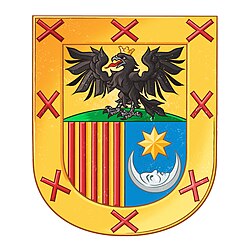
The Vergara-Azcarate's are descendents from Spanish conquistadors, and nobility. In Navarre, Spain they were a family with armery, meaning they had the right to have coat of arms and be considered a well known house in the Basque country. A branch of the family existed in Castile. Diego López de Medrano y Vergara, Lord of San Gregorio and the son of Catalina de Vergara, was an important nobleman in the kingdom of Castile during the late medieval period. During the Middle Ages they founded different houses in Abalcisqueta, Azcoitia, Azpeitia, Berástegui, Cizúrquil, Elgóibar, Elduayen, Elgóibar, Elgueta. Oñate, San Sebastián, Tolosa y Bergara. In 1391 the mayor of Bergara, Spain, was Juan Martínez de Azcarate, later in 1515 his descendant, the Baron Martin de Vergara y Azcarate moved to Getafe and changed his last name from Azcarate to Vergara y Azcarate after his hometown, making the family be known as The Vergaras from that point forward. Martin's grandson was Lieutenant Captain General Francisco de Vergara y Azcarate, born in Cadiz, Spain in 1575, the first of this family to travel to the new world. Later his son Antonio would follow his steps in 1621 founding the family in South America.
The most important branch of this family are descendants of the Royal Treasurer Antonio de Vergara Azcarate y Davila, a colonial Spanish captain and governor of Cartagena, Mérida, Maracaibo and La Grita, that started the distinguished family in Colombia. This branch is located in Santafé de Bogotá, Colombia. That within more than 15 generations have participated in the history of Colombia in its different periods such as the colony, the independence and the republics. They have had several influential members in the country, from nobility, Generals, Presidents; of which there are seven who have held the position of the Colombian presidency, who are members or are related to the family by affinity. In addition, Governors, Mayors, Ambassadors, Ministers, politicians, academics, soldiers, knights of different orders, Freemasons of different lodges, writers, poets, several stewards of the chapel of the tabernacle of Bogotá, notaries, lawyers, engineers, architects and businessmen.
In the new kingdom of New Granada, during the 18th and 19th century (1740s–1810s) they were considered one of the oldest and more aristocratic families of Colombia they consolidated great influence, being one of the first bureaucratic dynasties and political clans of Colombia.
| Luis de Ayala y Vergara | 1812 | 4° President The United Provinces of New Granada | |

|
Felipe de Vergara Azcarate y Caycedo | 1812 | 6° President The United Provinces of New Granada |

|
Estanislao Vergara y Sanz de Santamaria | 1828–1830 | 3° President of Gran Colombia |

|
Domingo Caycedo y Sanz de Santamaria | 1823 & 1831 | 4° & 7° President of Gran Colombia |
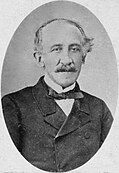
|
Ignacio Gutierrez Vergara | 1861–1862 | President of the Granadine Confederation |

|
Tomas Cirpiano de Mosquera y Arboleda Salazar | 1845–1849
1862–1867 |
1° 3° 6° President of The United States of Colombia, 3° President of The United States of New Granada, 5° President of Republic of New Granada |
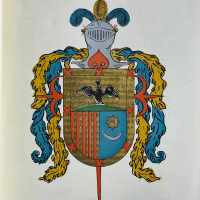
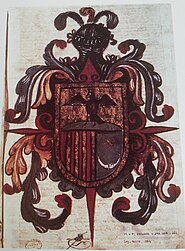
Toponymy
- Quinta Vergara
- Vergara River, Chile
- Quinta Vergara
- Bergara, Spain
- Vergara, Colombia
- Vergara, Uruguay
- Convention of Vergara
- Vergara vs California
- Los Vergaras, Mexico
- Augusto Vergara Airport, Panamá
- Battalion of Engineers "Vergara y Velasco"
- Vergara
External links
- Genealogical chart of Vergara family Chile (in Spanish)
- Genealogical chart of Vergara family Colombia (in Spanish)
Bibliography
- Vergara Azcárate, F. d. (1962). Relación genealógica. Colombia: Kelly.
- Vergara y Vergara, J. C. (1952). Don Antonio de Vergara Azcárate y sus descendientes: La colonia. La independencia. Spain: Impr. J. Pueyo.
- Vergara y Vergara, J. C. (1951). Vida de Estanislao Vergara. Colombia: Iqueima.
References
- Vergara Azcárate, F. d. (1962). Relación genealógica. Colombia: Kelly.
- Vergara y Vergara, Julio C. (1952). Don Antonio de Vergara Azcárate y sus descendientes: La colonia. La independencia. J. Pueyo.
- https://www.ayto-alcorcon.es/sites/default/files/2022-11/2022_JUNIO_FAMILIA_AZCA%CC%81RATE_IN_MEMORIAM.pdf
- "VERGARA – Auñamendi Eusko Entziklopedia". aunamendi.eusko-ikaskuntza.eus (in Spanish). Retrieved 2023-05-18.
- "Bergara – Deiturak – EODA". www.euskaltzaindia.eus. Retrieved 2023-05-18.
- Michelena, Luis (1953). Apellidos Vascos. Biblioteca Vascongada de los Amigos del País. p. 66.
- Hanks, Patrick; Lenarčič, Simon; McClure, Peter (2022). Dictionary of American Family Names (2 ed.). Oxford University Press. doi:10.1093/acref/9780190245115.001.0001. ISBN 978-0-19-024511-5.
- ^ Mujica, Juan (1927). Nobleza Colonial de Chile. Santiago de Chile: Zamorano y Caperan.
- Kimon Andreou (2008-11-26). "Juan Martínez de Vergara". IDTG. Archived from the original on 2020-11-25.
- Juan Carlos de Guerra (1902). "Ensayo de un padrón histórico de Guipúzcoa según el orden de sus familias pobladoras".
- Encina, Francisco A. (1940). Historia de Chile. Vol. 4. pp. 175–183.
- "Azkarate". sites.google.com. Retrieved 2023-05-17.
- Rodriguez-Uribe, Camilo (2011-05-03). "Rodriguez Lopez y Uribe Senior | pagina de Genealogia". rodriguezuribe.co (in Spanish). Retrieved 2023-05-17.